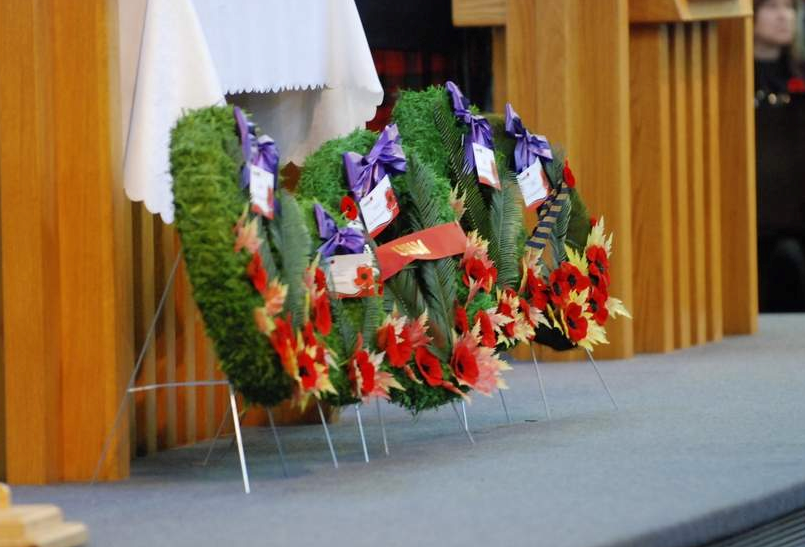Because of Remembrance Day, thoughts of past wars fought are on everyone’s minds. But how exactly did Saskatchewan contribute to the world wars?
The Humboldt Museum has an exhibit about Humboldt’s contribution to the WWI effort, and there are a host of interesting stories about both soldiers and volunteers at home helping out the war effort.
People from the community would have fundraisers and send things like scarves, socks, mitts, chocolate, gum, and cigarette in “boxes of comfort.”
“They really did try to look after the guys who were away, and it cost them a lot of time and a lot money to put that stuff together,” said Jean Price, one of the museum staff members who worked on the WWI exhibit.
During WWI, the Germans occupied Belgium, which, at the time, depended on imports for about 75 per cent of its food. The Germans refused to provide food for the Belgians and said they could continue importing food. But that was complicated by British naval blockades of Belgian ports. Relief efforts were set up for the Belgians and people from all over the world donated food. Belgium received flour all the way from Humboldt, Saskatchewan – over 600 sacks of flour, to be exact.
“I don’t think life here was easy at the time, especially having such a large farming community,” Price said. “To be losing that number of young men to the war must have been a real strain for the community, and yet they still stepped up.”
In addition to soldiers, Humboldt also sent over a nurse, Emily Long, who worked in a hospital in Britain. While she was there, she nursed some soldiers from Humboldt.
“She came across them and they knew her from home, so they all had nice things to say about her,” Price said.
On a wider scale, Saskatchewan was second-last in terms of number of enlisted soldiers out of all the provinces. This can be explained by the fact that almost half of eligible men in Saskatchewan were foreign-born, and when the war broke out, they were not allowed to enlist. Another reason for the low enlistment rate was Saskatchewan’s large agricultural sector, which meant that a maintained workforce was imperative to keep producing crops, according to a paper written for the Western Development Museum.
Most initial WWI volunteers had ethnic ties to the Empire. But as unemployment rose, more and more Saskatchewan residents joined up for the $1.10 per day the soldiers received. One of the more popular Canadian regiments, the Princess Patricia Canadian Light Infantry, had so many soldiers from the prairies enlist that it was considered a prairie battalion. Saskatchewan units participated in famous battles like Ypres, the Somme, and Passchendaele. At Ypres, Canadians were the first to encounter chlorine gas, and at the Battle of the Somme, three Canadian divisions had 2,600 casualties before the main battle even began. By 1916, all Canadians fought as the Canadian Corps, and their most well-known victory would be that of Vimy Ridge.
When WWII began, Saskatchewan – and Canada – were unprepared due to the hard times brought on by the Depression. Two Saskatchewan regiments mobilized very quickly, while the Regina Rifles were mobilized about nine months after war broke out. Saskatchewan soldiers were represented in both the Merchant Marines and the air force.
During WWII, the price of wheat started falling and 400 Saskatchewan farmers, on two trains commissioned by the Saskatchewan Wheat Pool, took a petition with 185,000 signatures to Ottawa to ask for higher wheat prices. A month later, the price of wheat was raised. Also during this time, Saskatchewan provided uranium for the war effort.
While Saskatchewan’s effort in the world wars isn’t often publicized, it’s clear that they were integral in a variety of ways: whether it’s the men who fought, the women who sent supplies for the soldiers, or the materials sent overseas.




